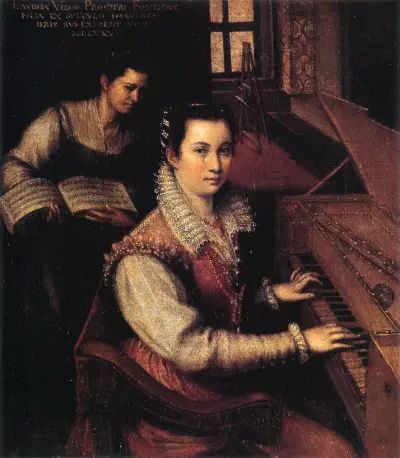Lavinia Fontana was a talented Mannerist artist from Italy, and also notable for being one of the few female painters from that period to achieve success.
Introduction
She would focus most on the genres of mythology, religion and portraiture, also completing a number of introspective self portraits. The usual difficulties faced by female artists at that time were navigated by Lavinia thanks to her father, Prospero Fontana, who taught at the School of Bologna and was an accomplished painter himself. He noticed immediate potential with his daughter and happily taught her the foundations of art to get her started.
In a real changing of roles for that time, her later husband, Gian Paolo Zappi, would care for their children whilst she concentrated on her career. This was due to her considerable success and a steady flow of commissions which allowed the family a comfortable life. Her husband would also help out with acquiring new work for her, so that she could concentrate on her artistic commitments and already enjoying significant connections within the industry thanks to his prestigious family background.
Life in Bologna
Having received training from her father, Lavinia was now ready to seek out work within Bologna. Her earliest known successes came about when she was in her early twenties. Her early work was often religiously themed and on small panels which could be gifted by donors. It was by her early thirties that Lavinia had positioned herself as one of the leading portraitists in Bologna, and from this point onwards, her financial status was secure.
Whilst being a female painter would for many have been a disadvantage within Italian society at that time, she was able to build strong relationships with female donors who trusted her with their requests and felt more able to speak openly about their wishes. There was also an easier connection in terms of what exactly they required for each commission, that some men may not have had.
The couple would have 11 children together, but her husband was flexible in allowing Lavinia to focus as much on her art as possible. By this stage, demand for her services was huge, and she was able to be more selective about the work she took on, and also charge significant sums for each work. Fontana still continued to experiment with mythological and religious content from time to time, in order to keep her creative mind fresh.
Final Years in Rome
Pope Clement VIII offered Lavinia an offer of employment in Rome, and the whole family relocated in 1603. They would remain there up until her death in 1614, and she spent her final years as a court painter within the Vatican, focused most on portraits. Whilst working productively, she would also start to receive huge recognition for her work, with a whole series of awards which marked her reputational peak, brought about by her hard work for many decades, her undoubted talent, and also the considerable opportunities that she enjoyed whilst now living in Rome.
Artistic Influences
The Carracci family were the dominant force within Bolognese art during the time of Lavinia Fontana and she would eventually take influence from their work into her own. Agostino, Annibale and Ludovico set up the Accademia dei Desiderosi which helped to train young Bolognese artists a similar method to their own, and this would become the pre-eminent style for the whole region.
[The Carraccis wanted to take]... from Raphael a feminine grace of line, from Michelangelo a muscular force, from Titian strong colours and from Correggio gentle colours.
Agostino Carracci
The Carracciesque style would influence the Baroque movement and became well known for the foundational support of drawing, the strong use of emotion within their work, movement, energy and also the use of classical themes and content. Fontana's color schemes are also set to have resembled some of the great Venetian masters.
Lavinia Fontana Gallery
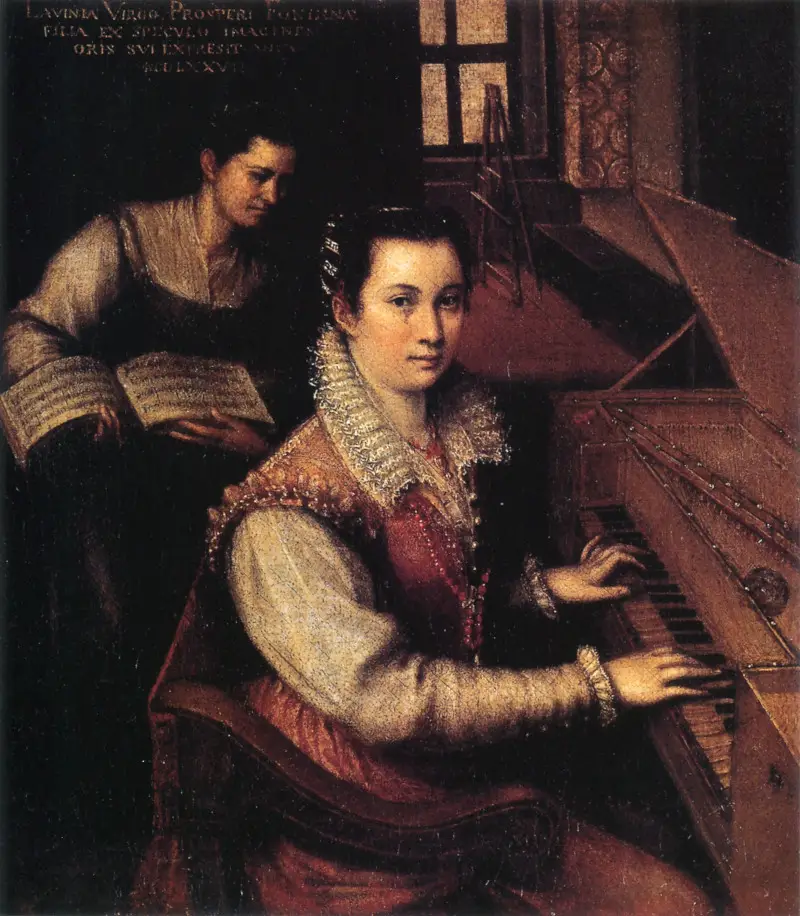
Self-Portrait at the Virginals with a Servant
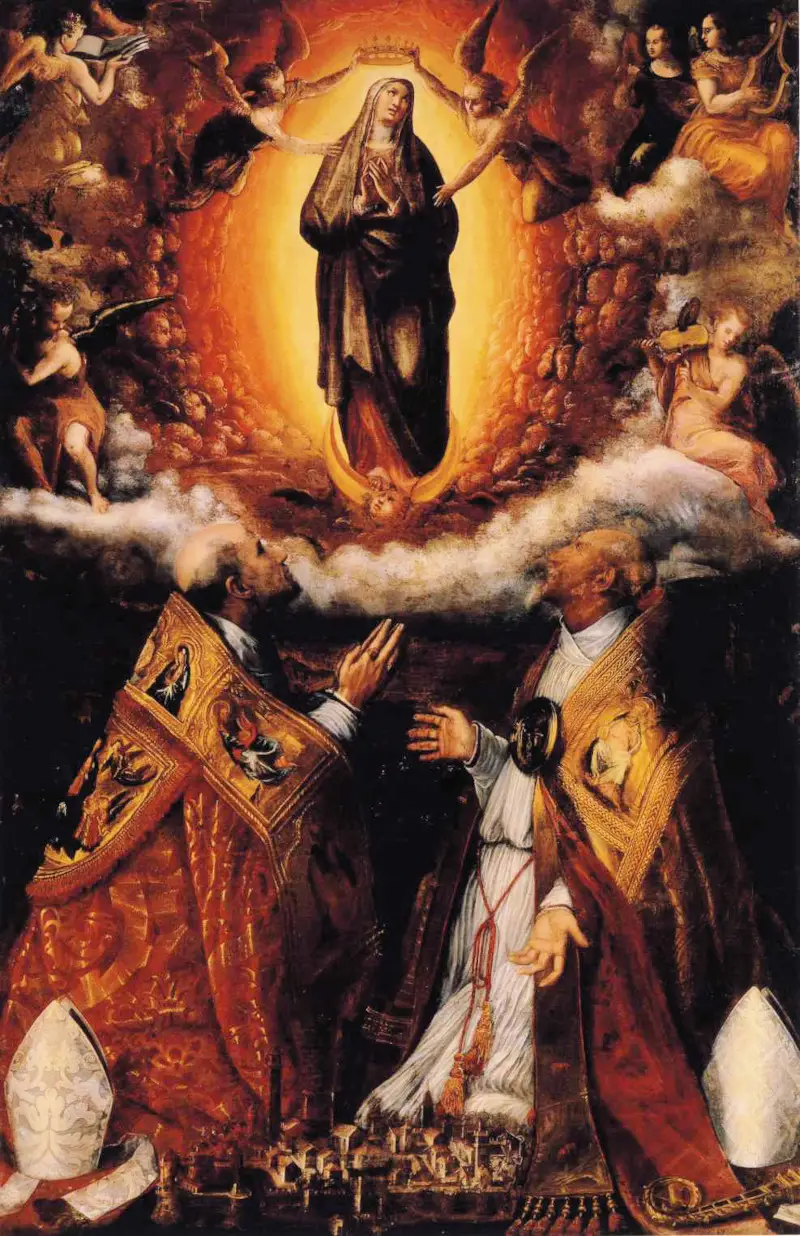
Assumption of the Virgin with Saints Peter Chrysologus and Cassian
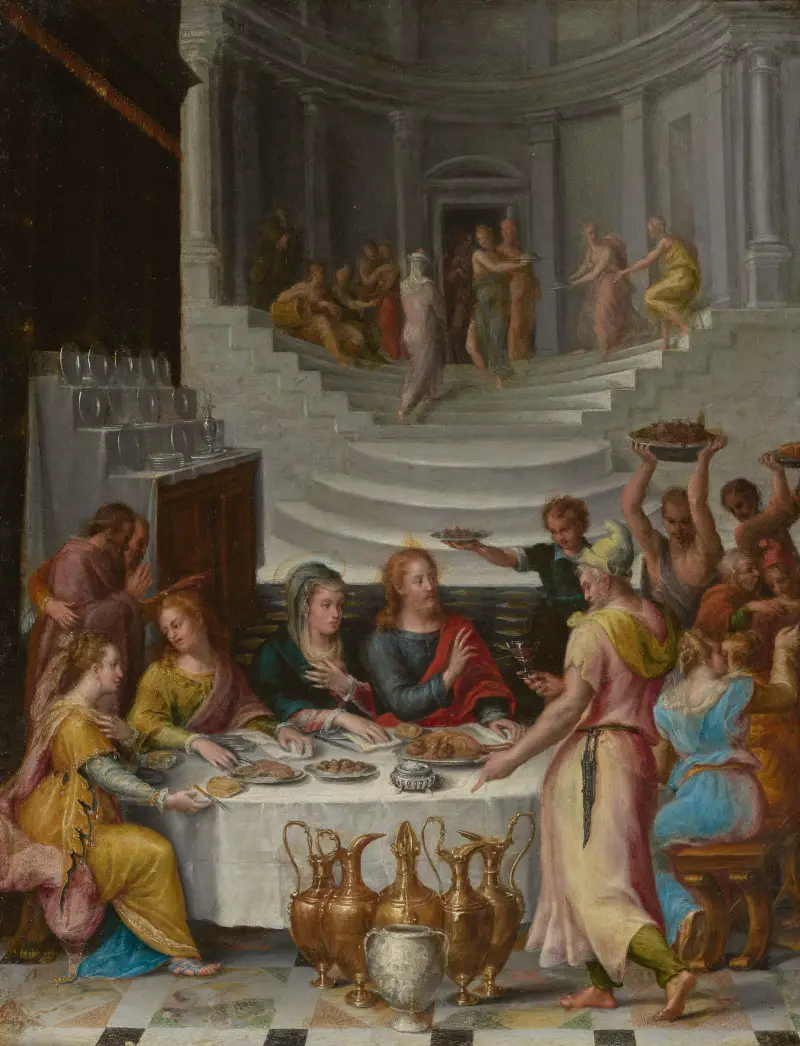
Wedding Feast at Cana
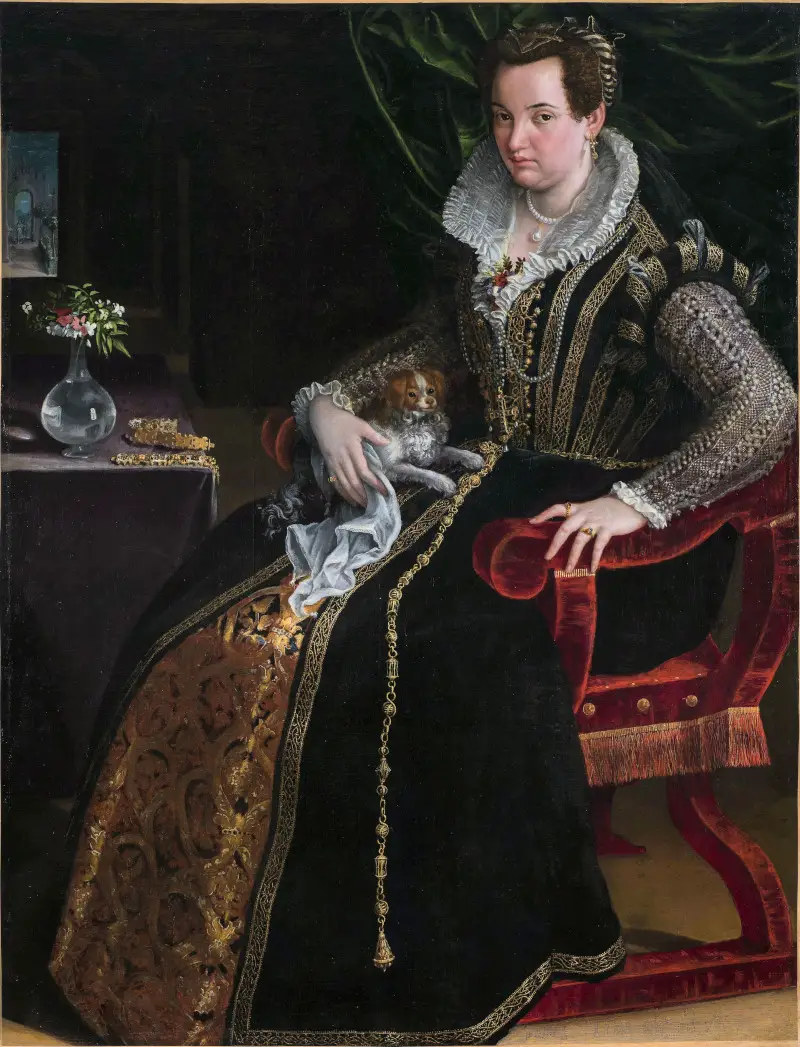
Portrait of Costanza Alidosi
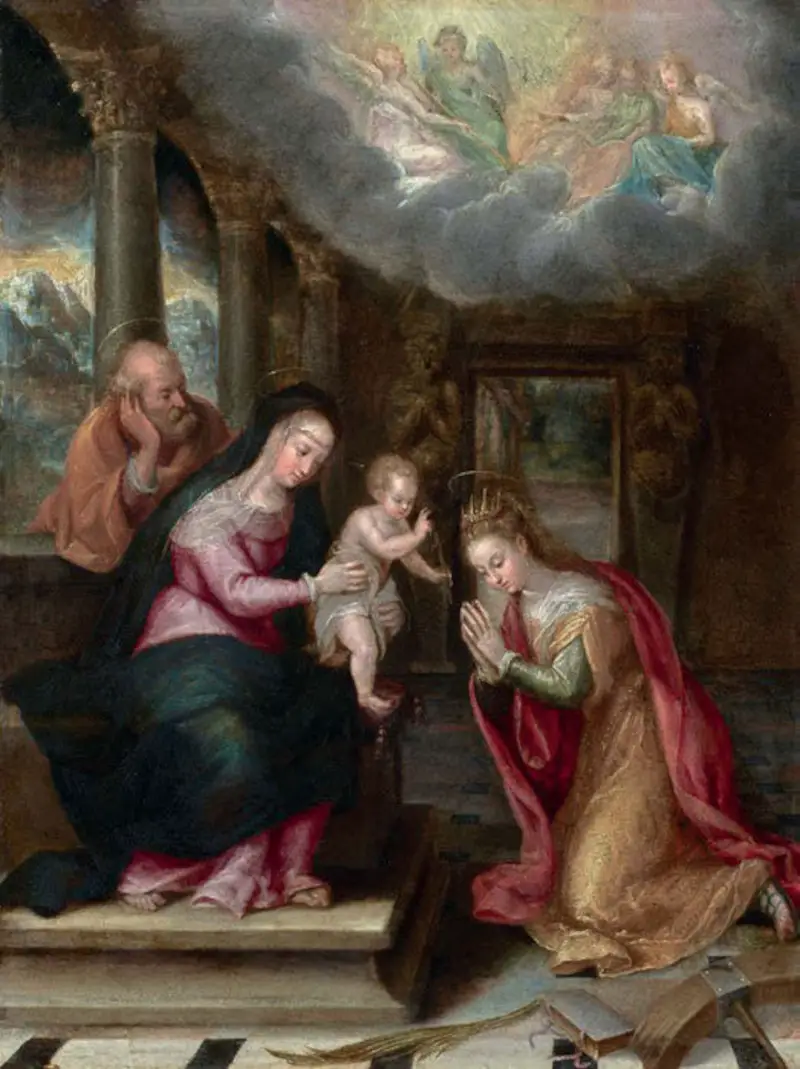
Mystic Marriage of Saint Catherine
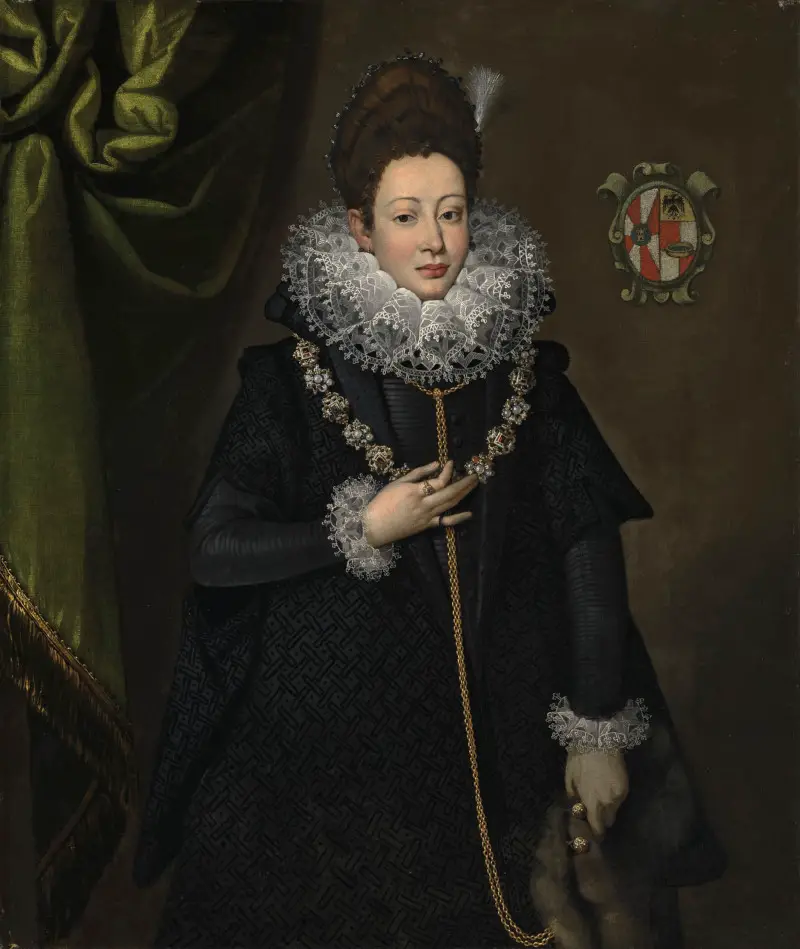
Portrait of Bianca Lucia Aliprandi
Famous Artworks
Assumption of the Virgin
Fontana created at least two versions of Assumption of the Virgin, and the ones that we know of came in 1584 (Palazzo Comunale, Imola) and 1593 (Pieve di Cento, Collegiata di Santa Maria Maggiore). Both interpretations feature the main figure centrally, in the upper half of the painting, with a whole plethora of detail then filling the rest of these large panels.
 Assumption of the Virgin with Saints Peter Chrysologus and Cassian
Assumption of the Virgin with Saints Peter Chrysologus and Cassian
Self-Portrait at the Virginals with a Servant
The artist produced a number of notable self portraits in the 1570s, including this one plus also Self-Portrait in the Studio. Her image would also appear many years later in a commerative coin, sat in side profile and pictured as an elderly lady by that stage.
 Self-Portrait at the Virginals with a Servant
Self-Portrait at the Virginals with a Servant
Portrait of a Noblewoman
A number of portraits by the artist are now featured in the permanent collection of the National Museum of Women in the Arts, Washington, D.C., which, as the name suggests, is making a conscious effort to provide a strong coverage of the many great female artists who have not received as much recognition as they might have deserved. You will also find Portrait of Costanza Alidosi in the same venue.
Legacy as an Artist
Initially, much of her work was misattributed to others, just as happened to most early female painters. Much of this has now been corrected by art historians, but there remains question marks over a number of paintings still today. From those confidently attributed to her hand, we can conclude much about her legacy as an artist. In a technical sense, she took on a number of students who would follow similar styles in their own careers, including the likes of Alberto de' Rossi, Alessandro Tiarini and Aurelio Bonelli.
Fontana was also key in changing opinions towards female artists, and potentially helped to open doors for those who followed in later centuries. As her reputation spread, her gender became irrelevant, in fact almost an advantage in bringing her a unique selling point. She was also influenced by other female painters such as Sofonisba Anguissola, Caterina Vigri, and Properzia de' Rossi and helped to strengthen this growing group of women who had achieved success against the odds.



